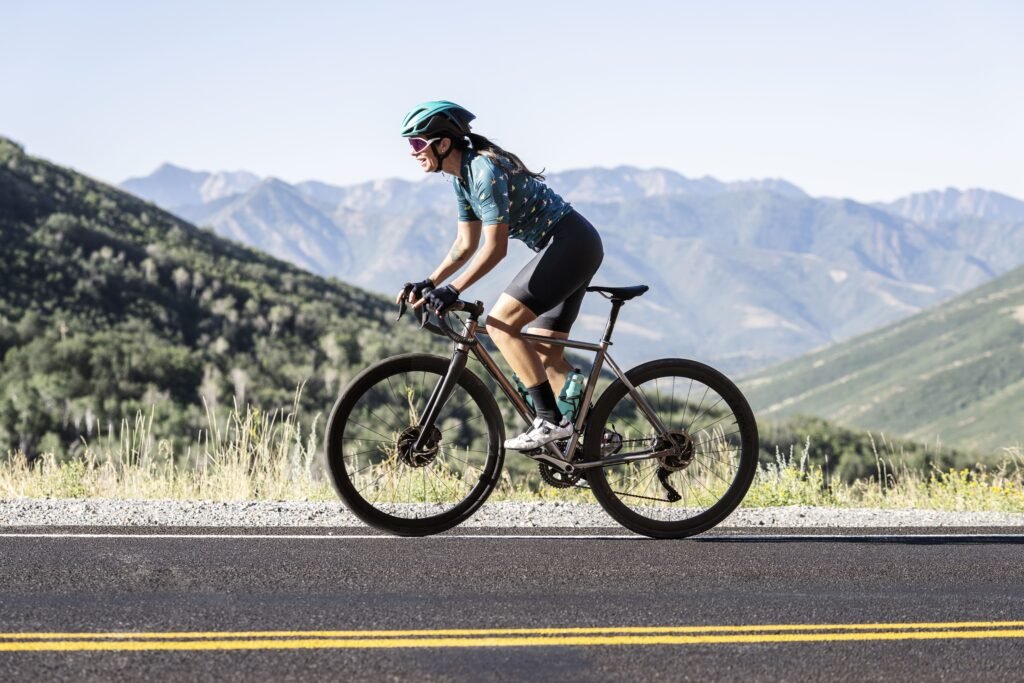The Best Fluffy Pancakes recipe you will fall in love with. Full of tips and tricks to help you make the best pancakes.
Road Bike Geometry Explained
Understand geometry specs and how they affect speed, comfort, and handling.

It started with a twinge in my lower back. What should’ve been a relaxing 60-mile ride turned into a battle of discomfort—numb hands, aching neck, hips out of alignment. My bike looked sleek, felt light, and shifted like a dream. But I was suffering. Something was wrong.
After months of guessing, I finally visited a professional fitter. Within 20 minutes, she measured my height, inseam, torso length—and then introduced me to the magical world of bike geometry. “Your reach is too long. Stack’s too low for your flexibility. Let’s adjust it.” The result? A slightly different stem and a new understanding of how geometry affects everything—from comfort and control to speed and confidence.
Suddenly, my rides felt smooth, natural, and exhilarating again. Corners became a joy, climbs less punishing, and I could finally focus on the road, not the pain.
This is why understanding bike geometry explained is so crucial—because it transforms your ride experience. And no, it’s not just engineering jargon. It’s the secret sauce to loving every mile of your road cycling journey.
Stack and Reach: The Foundation of Your Road Cycling Fit
Think of stack and reach as the DNA of your road bike – these two measurements determine whether you’ll love or hate every mile you ride. Stack is the vertical distance from your bottom bracket to the top of the head tube, while reach measures the horizontal distance between the same points. Getting this wrong is like buying shoes in the wrong size – technically functional but absolutely miserable. High stack paired with short reach creates that comfortable, upright position perfect for century rides and coffee shop tours, while low stack with long reach puts you in that aggressive, wind-cutting position that makes you feel like a Tour de France pro.
• Endurance Sweet Spot: High stack keeps your back happy during those epic road cycling adventures that stretch into the afternoon.
• Race Geometry Reality: Low stack and long reach make you faster but require serious core strength and flexibility to maintain comfort.
• Fit Philosophy: Your riding style should dictate geometry – don’t force your body to adapt to the wrong bike design.
Head Tube Angle: How Your Road Bike Handles the Road
The head tube angle might sound like boring engineering talk, but it’s actually what determines whether your road bike feels like a precision scalpel or a comfortable cruiser when you’re carving through corners. Measured in degrees relative to the ground, this angle controls how quickly your bike responds to steering inputs and how stable it feels at various speeds.
| Head Tube Angle | Steering Feel | Best For | Trade-offs |
| Steep (73-74°) | Quick, responsive, twitchy | Criteriums, tight courses, aggressive road cycling | Less stable at high speeds, requires constant attention |
| Slack (71-72°) | Stable, predictable, planted | Long rides, descents, touring | Slower to turn, less agile in tight situations |
A steep angle makes your bike turn faster than your thoughts can keep up, which is fantastic for racing but exhausting for casual road cycling. Slack angles feel rock-solid when you’re bombing down mountain descents but can feel sluggish when you need to dodge that pothole that appeared out of nowhere.
Wheelbase: The Stability Factor in Road Cycling
Wheelbase is like the personality trait of your road bike – it determines whether your bike feels like a nervous racehorse or a steady trail horse during your road cycling adventures. This measurement between your front and rear axles might seem simple, but it dramatically affects how your bike behaves in every riding situation from sprint finishes to relaxed group rides.
• Long Wheelbase Magic: More distance between wheels creates that planted, stable feeling that makes descents feel safer and long rides more comfortable.
• Short Wheelbase Snap: Less distance means quicker direction changes and that razor-sharp handling that makes you feel like you’re dancing with the road.
• Real-World Impact: The difference between feeling confident at 40 mph downhill versus white-knuckling your handlebars often comes down to wheelbase.
• Riding Style Match: Choose based on whether you prioritize stability for long road cycling tours or agility for competitive racing scenarios.
Bottom Bracket Drop: Your Road Bike’s Center of Gravity
Bottom bracket drop is the unsung hero of road bike geometry that most riders never think about until they’re leaning hard into a fast corner wondering why their bike feels so planted or so sketchy. This measurement determines how low your center of gravity sits, which directly affects your confidence when the road gets twisty or the speeds get serious.
| BB Drop Style | Feel in Corners | Riding Confidence | Best Application |
| Lower Drop | Planted, stable, predictable | High confidence in fast corners | Racing, aggressive road cycling, technical descents |
| Higher Drop | Slightly less stable | Adequate for most riding | Casual riding, touring, general road cycling |
A lower bottom bracket makes your road bike feel like it’s on rails through corners, giving you the confidence to maintain speed when the road gets interesting. Higher drops sacrifice some of that cornering prowess but offer slightly more ground clearance – though honestly, most of us aren’t pedaling through corners anyway.
Chainstay Length: The Power Transfer Personality
Chainstay length is where the rubber meets the road in terms of how your road bike translates your leg power into forward motion. This often-overlooked measurement between your bottom bracket and rear dropout determines whether your bike feels like a rocket ship on climbs or a stable platform for grinding out long miles.
• Short Chainstay Snap: Shorter distances create that immediate, responsive feeling where every pedal stroke translates directly into acceleration during road cycling.
• Long Chainstay Stability: Extra length provides a more stable platform that’s forgiving and comfortable for extended riding sessions.
• Climbing Character: Short chainstays make your bike want to jump forward on steep climbs, while longer ones provide steady, predictable power delivery.
• Weight Distribution: Chainstay length affects how weight is distributed between your wheels, influencing traction and handling characteristics during various road cycling scenarios.
Summary
You don’t need to be a mechanic or pro cyclist to understand how your road bike’s geometry impacts your ride. From stack and reach that shape your comfort, to head tube angles that determine your steering style, and wheelbase that sets the tone for stability or agility—it’s all part of the DNA of your bike. And it matters.
Choosing the right geometry is about more than numbers. It’s about matching your body, your style, and your goals with a machine that responds like an extension of yourself. Whether you’re cruising centuries, chasing speed, or navigating weekend rides, getting the geometry right means fewer aches, more smiles, and a lot more confidence.
If this article has made you rethink your current setup or sparked curiosity about that next upgrade—great! You’re one step closer to unlocking the ride you’ve always dreamed of.
🔗 For a deeper dive into getting started, finding the right gear, and building endurance, check out our pillar post: Road Cycling Guide





